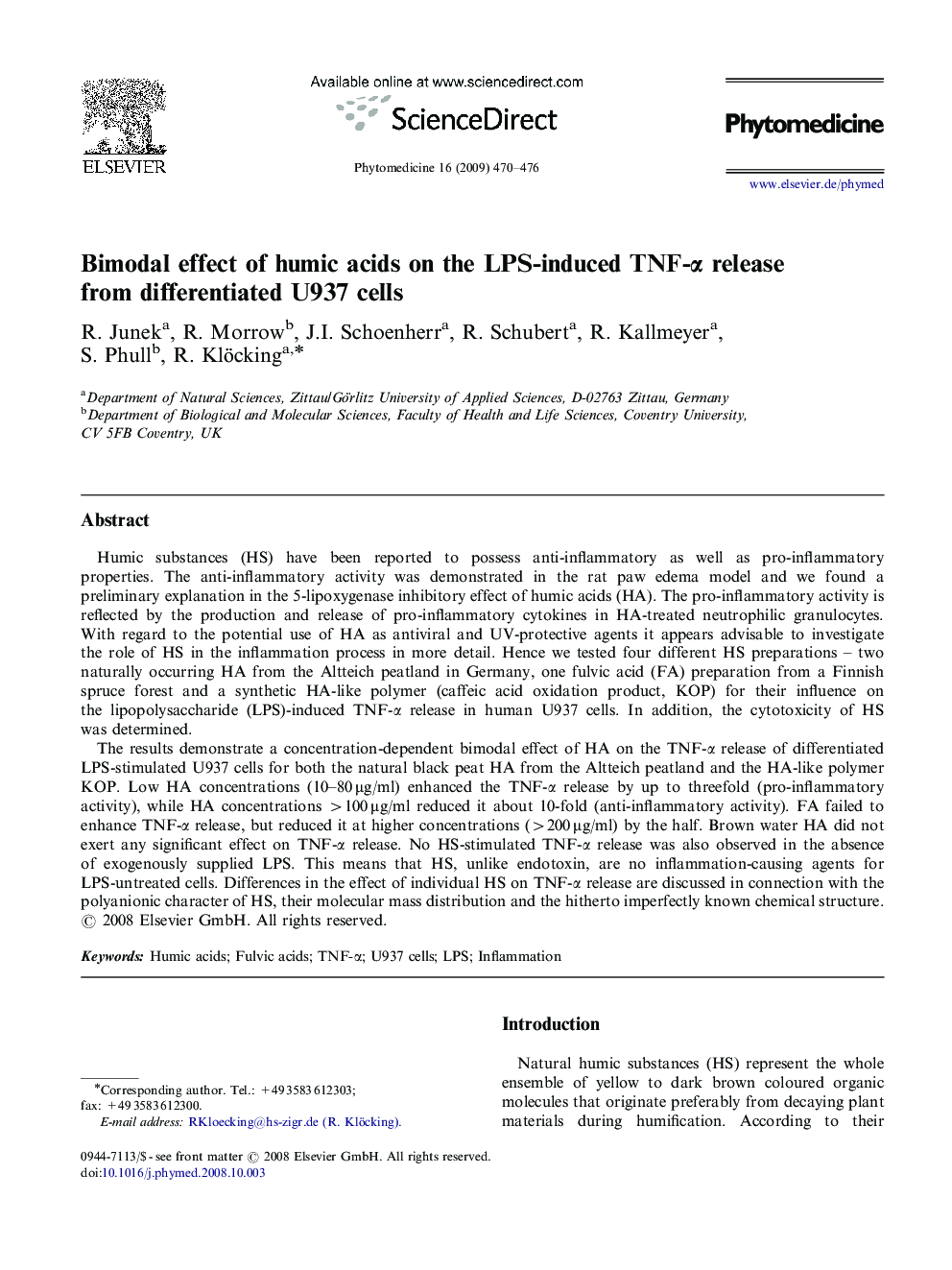| Article ID | Journal | Published Year | Pages | File Type |
|---|---|---|---|---|
| 2497815 | Phytomedicine | 2009 | 7 Pages |
Humic substances (HS) have been reported to possess anti-inflammatory as well as pro-inflammatory properties. The anti-inflammatory activity was demonstrated in the rat paw edema model and we found a preliminary explanation in the 5-lipoxygenase inhibitory effect of humic acids (HA). The pro-inflammatory activity is reflected by the production and release of pro-inflammatory cytokines in HA-treated neutrophilic granulocytes. With regard to the potential use of HA as antiviral and UV-protective agents it appears advisable to investigate the role of HS in the inflammation process in more detail. Hence we tested four different HS preparations – two naturally occurring HA from the Altteich peatland in Germany, one fulvic acid (FA) preparation from a Finnish spruce forest and a synthetic HA-like polymer (caffeic acid oxidation product, KOP) for their influence on the lipopolysaccharide (LPS)-induced TNF-α release in human U937 cells. In addition, the cytotoxicity of HS was determined.The results demonstrate a concentration-dependent bimodal effect of HA on the TNF-α release of differentiated LPS-stimulated U937 cells for both the natural black peat HA from the Altteich peatland and the HA-like polymer KOP. Low HA concentrations (10–80 μg/ml) enhanced the TNF-α release by up to threefold (pro-inflammatory activity), while HA concentrations >100 μg/ml reduced it about 10-fold (anti-inflammatory activity). FA failed to enhance TNF-α release, but reduced it at higher concentrations (>200 μg/ml) by the half. Brown water HA did not exert any significant effect on TNF-α release. No HS-stimulated TNF-α release was also observed in the absence of exogenously supplied LPS. This means that HS, unlike endotoxin, are no inflammation-causing agents for LPS-untreated cells. Differences in the effect of individual HS on TNF-α release are discussed in connection with the polyanionic character of HS, their molecular mass distribution and the hitherto imperfectly known chemical structure.
